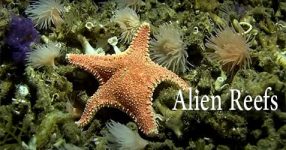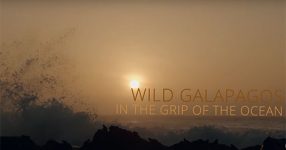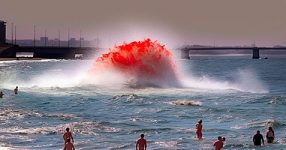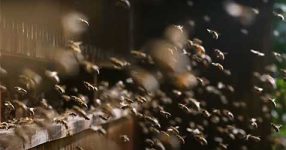This documentary delves into the hidden treasures of the Caribbean, exploring its diverse wildlife and natural wonders. From the volcanic landscapes to the lush forests and vibrant coral reefs, “Caribbean: Wild Side of Paradise” takes viewers on a journey through this tropical paradise, revealing the unique species that call it home and the challenges they face in their struggle for survival.
Unveiling the Secrets of the Caribbean
The Caribbean, as depicted in “Caribbean: Wild Side of Paradise,” is an archipelago of over 7,000 islands and reefs, each with its own distinct ecosystem and wildlife. From the dense tropical forests to the coral reefs teeming with life, the region is a treasure trove of biodiversity.
Trinidad, the southernmost island, serves as a nesting ground for leatherback turtles, the largest sea turtles on Earth. These majestic creatures return to the Caribbean’s shores each year to lay their eggs, facing numerous challenges in their quest to ensure the survival of their species.
Volcanic Origins and Unique Adaptations
Dominica, one of the youngest islands in the Caribbean, boasts nine active volcanoes and a wealth of volcanic activity. Despite its rugged terrain, the island is home to a rich diversity of life, from hummingbirds with their lightning-fast metabolism to unique plants that rely on these birds for pollination.
The fertile volcanic soils of the Caribbean support not only wildlife but also human communities. The original inhabitants of the islands adapted to life in these volcanic landscapes, relying on fishing and foraging for survival.
Guardians of the Coral Reefs
The Caribbean’s coral reefs are among its most precious treasures, supporting a vast array of marine life. However, these reefs face threats from hurricanes and human activities, with many ships having foundered on their treacherous currents over the centuries.
Despite these challenges, coral reefs have shown remarkable resilience, aided by natural defenses such as mangrove forests that serve as buffers against storms and protect coastal areas from erosion.
Island Hopping and Survival Strategies
Island-hopping reptiles like iguanas have successfully colonized many of the Caribbean islands, utilizing hurricanes to spread their populations. Coconuts, newcomers to the region, have also adapted to island life, using their buoyancy to travel vast distances across the ocean.
From the bustling mangrove swamps of Trinidad to the ancient caves of Dominica, “Caribbean: Wild Side of Paradise” unveils the ingenious strategies for survival that the region’s wildlife has evolved, ensuring their continued existence in this wild paradise.
Though the Caribbean has faced centuries of exploitation and environmental challenges, its wild treasures endure. From the majestic leatherback turtles to the colorful hummingbirds and elusive capuchin monkeys, “Caribbean: Wild Side of Paradise” showcases the region’s biodiversity as a testament to the resilience of life in the face of adversity. As stewards of this fragile ecosystem, it is our responsibility to protect and preserve the wild side of paradise for generations to come.












